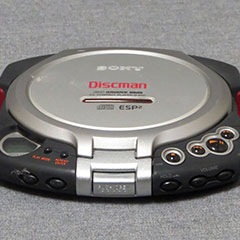The Hit Parade: Music that Follows the Trend
What is the role of music in adolescence? The analysis in response to that question changes depending on the age of the respondent, but we can all agree that it is a means of expression and identity formation.
The Role of Music in Adolescence
Download video: MP4, (17,57 MB), WebM, (18,24 MB), Ogg (17,47 MB) (1 minute 33 seconds)
Interview with Francine Dufour, Violin Teacher at the Conservatoire de musique de Trois-Rivières, and Catherine Laurin, about the importance of music during adolescence.
Interview with Francine Dufour
Daughter: Music is really a big influence on teenagers. What is really surprising is how it is part of their identity. Teenagers will identify with music like it is a part of themselves.
Mother: They are looking for something that is a mirror of them.
Daughter: During adolescence, we are trying so hard to find our identity that we see ourselves in music; we find a place that is ours in it.
Mother: So adolescence is lived through music, through idols, through the people who play music.
Daughter: Teenagers need exaltation and excitement, and I think they would not express their feelings as passionately and intensely without music. My mother really gave me a passion for music, and so that's what I have to say about that. Thank you very much!
Francine Dufour
Violin Teacher at the Conservatoire de musique de Trois-Rivières
Catherine Laurin
Technical Team:
David Leblanc: Director/Cameraman/Editor
Jonathan Leblanc: Technician
Acknowledgement
Conservatoire de musique de Trois-Rivières
From the 20th century to the present day, technological developments have influenced the way we listen to music. The evolution of music devices was so fast-paced that between our great-grandparents’ gramophones and modern kids’ iPhones, we could inventory more than 100 other devices. Thanks to first the radio, and then television, teenagers have had access to the youth of the world, and especially the youth of the U.S.A. Long before globalisation, American stars have dominated the charts.
The Hit Parade from 1900 to 2000
A musical hit parade classifies trendy songs according to their popularity. Over the course of the century, music had transformed reflecting social changes. The hit parade translates musical crazes of the young generation. To understand the evolution of music, here is a simple musical overview of the 20th century through French and English hits:
1900s
À la claire fontaine, L. Loiseau, 1900
Ô Canada, mon pays, mes amours !, Victor Occelier, 1903
In the Sweet Bye and Bye, Robert Price, 1904
1910s
Un Canadien errant, Joseph Saucier, 1910
Le drapeau de Carillon, Jean-Marie Magnan, 1918
Rock-a-Bye Your Baby with a Dixie Melody, Al Jolson, 1918
K-K-K-Katy, the Stammering Song, Billy Murray, 1918
1920s
Vive la canadienne, Eva Gauthier, 1921
Maluron malurette, Conrad Gauthier, 1928
Charmaine, Guy Lombardo & his Orchestra, 1927
1930s
Ça va venir découragez-vous pas, La Bolduc, 1930
J'en arrache, Ovila Légaré, 1930
You’re the Only Star in My Blue Heaven, Dick Todd, around 1938
1940s
La lettre d'un soldat canadien, Roland Lebrun, 1942
Les fraises et les framboises, Trio Soucy et Fernando Soucy, 1949
You're Breaking My Heart, Vic Damone, 1949
Cruising Down the River, Blue Barron, 1949
1950s
Le p'tit bonheur, Félix Leclerc, 1951
Au fond des campagnes, Quatuor Alouette, 1952
Jailhouse Rock, Elvis Presley, 1957
Mack the Knife, Bobby Darin, 1959
1960s
La poupée qui fait non, Les Sultans, 1966
La dernière valse, Ginette Reno, 1967
I Want to Hold Your Hand, The Beatles, 1964
I Can't Get No Satisfaction, The Rolling Stones, 1965
1970s
Cauchemar, Robert Charlebois, 1973
Le lac de Côme, Alain Morisod & The Sweet People, 1978
Stayin' Alive, Bee Gees, 1978
You're the One That I Want, John Travolta & Olivia Newton-John, 1978
1980s
Ma blonde m'aime, Pierre Bertrand, 1983
Chats sauvages, Marjo, 1987
Another Brick In the Wall, Pink Floyd, 1980
Flashdance (What A Feeling), Irene Cara, 1983
1990s
Aime, Bruno Pelletier, 1997
Juste pour voir le monde, La Chicane, 1999
Because You Loved Me, Céline Dion, 1996
Adia, Sarah McLachlan, 1998
2000s
Les étoiles filantes, Les Cowboys Fringants, 2005
Changer, Jean-François Breau et Marie-Ève Janvier, 2003
Drops Of Jupiter, Train, 2001
Crazy, Gnarls Barkley, 2006









